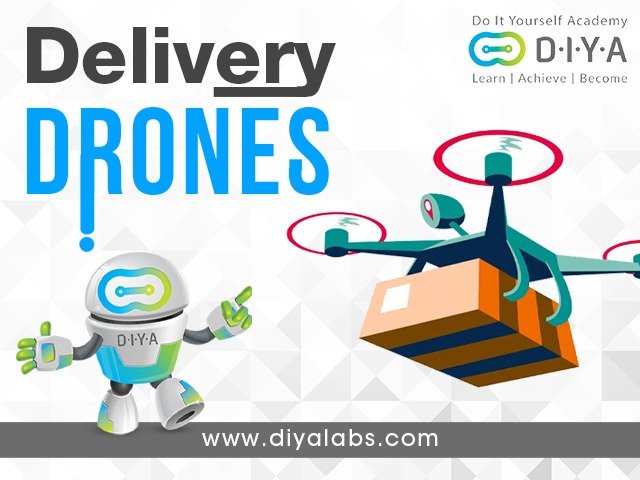Delivery drones and not flying cars, the actual reality of last-mile transport solutions

Delivery drones and not flying cars, the actual reality of last-mile transport solutions
Chitty Chitty Bang Bang, a movie released in 1968, takes us on a journey in a car that flies in the sky. From the 1960s to date, we’ve watched plenty of sci-fi movies that have flying cars. There’s even a European company, Aeromobil that’s building a car that runs on the road and flies in the sky! There may be a day that flying cars may become the norm, but for the present, let’s think of the practicalities, and yes, the financials. Delivery drones and not flying cars are the actual reality of last-mile transport solutions.
What are delivery drones?
You’ve probably seen many drone cameras that are used to capture large landscapes, huge gatherings, and aerial shots of locations. The delivery drone is somewhat similar, except that it’s built more robustly to hold the weight of the package that’s to be delivered. Technically, the drone is called an unmanned aerial vehicle (UAV). It has a compact body with 4 to 8 propellors on top and an extension at the bottom to place the package. The drone is powered by rechargeable batteries. It can be operated using a remote control within a specified radius.
Why drones are great for last-mile transport and delivery?
In e-commerce speak, last-mile delivery refers to the final leg of the journey that the package travels to reach the customer’s house. Drone delivery is beneficial for the customer and the supplier and the ecommerce provider. Drone delivery can be very convenient for customers who are located in areas where there is no proper road connectivity. It’s also a good choice for farm houses and houses that are away from the crowd. For example, if there’s a house that’s in the middle of a 1-acre land or even a 5-acre land, package deliveries can be done using a drone. One, it helps protect the privacy. Second, it reduces the extra travel for the delivery agent. He/she can find the farthest point of coverage and send the package via drone.
Suppliers and ecommerce providers benefit from drone delivery as it greatly reduces logistics expenses and also makes last-mile delivery more efficient. The shortest distance between two points is a line. A drone can travel in a straight line in air. This means that the drone can take the shortest route to the location. It reduces time and energy at the same time. Robots are also being tried in sorting centers. It can quickly sort and separate up to 9000 packages in just one hour, which is a huge leap in productivity and resource usage. Another benefit of using drone for last-mile transport is that it helps in fuel conservation. Two-wheelers and 4-wheelers used in the last-mile transport and delivery consume huge amounts of petrol or diesel. Using drones can help reduce this usage, which makes it an ecofriendly option as well.
What are the challenges in using drones for last-mile delivery?
The biggest obstacle for implementing this solution is the enormous investment. Big brands such as Amazon, UPS and Dominos are able to sink huge amounts of money in drone transport and delivery. But, it’s difficult for small and mid-sized companies to do the same. The second challenge is that the technology is not completely developed. We need to increase the payload and improve the security features. Another challenge is that maneuvering drones in high-density locations and around high-rise buildings makes it extremely difficult for use in urban regions.
Conclusion
There are pros and cons of using drones. However, we can make effective use of technology to deal with the challenges and improve the benefits. Maybe flying cars will be used for last-mile delivery in the next century. For now, we have delivery drones and we can see them going places!